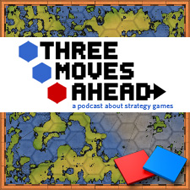Real time strategy games are mostly, at their heart, about economics.
(I’m talking here about those RTS that require base-building and unit creation of some form – not one of the many other types of strategy games that just happen to move with the clock.)
With these games, the prevailing paradigm has been the peasant economy. You build a lot of peons and send them to resource nodes to harvest. The trick is balance your civilian and military forces in such a way that revenue is steady, but your population cap isn’t blocked by berry pickers and gold miners.
This type of economy often involves a lot of micromanagement. You have to notice when your harvesters have exhausted a node, you have to consider any resource gathering bonuses, you have to measure how far you are willing to go from your base to get that stack of wood. Rise of Nations and Cossacks tried to minimize some of this micromanagement by giving you inexhaustible mines and forests, but the basic trade-offs were the same. Harvesters are cheap, weak and an essential cog in the machine.
Battle for Middle Earth II has a much different economic structure. Peasants are not cheap – they cost more than many basic soldiers so you will not be building hordes of them. There are no resource nodes. Economic structures can be built anywhere and their productivity is determined by the surrounding land. And once these structures are built, all you have to do is defend them. No slaughtering of animals or reaping of grain. You just plop the building down and off they go, making money for you.
This gives you an entirely new economic calculus. Resource growth is based on expansion and territorial control. Battles for the middle ground matter earlier, and the relatively high cost of builders means that every builder death matters more than a single peasant death in Age of Empires. So do you build a third builder? Do you build the farm first or the tower you might need to protect it? Every second matters.
The difference is subtle, but the cost-benefit balance of the traditional RTS becomes a matter of risk-reward in a game where your resource chain is theoretically infinite but highly dependent on one or two fragile units. Instead of making sure that your peasants are working on the best way to accumulate the most important resource (hunting vs. farms in AoM, handling the perennial wood shortage in AoE3, sparing guys to work oil fields in RoN) you are forced to find the best way to protect your supply infrastructure.
A lot of this is based on the real difference between the forms – BfME is a game where the point is to get into a fight as soon as possible. Act of War was like this, too. Like BfME2, it had a single resource (money) that could be gathered in a number of ways. The only infinite stream, though, was to capture some PoWs and lock them up. And the big money – banks – were usually in contested territory. None of this starting by a berry bush and a bunch of cattle.
The traditional RTS economic model, like AoE, RoN, Empire Earth, Cossacks, and Warcraft is designed to slowly give you access to the cool weapons, often through “aging up” – in effect, researching expensive techs so you can get to your side’s superweapons. This means steady management of a number of different resource streams. Sure, you can rush. But remember that the most likely positive outcome of the rush is to cripple the early economic game of your opponent. Not many games today are designed with the fatal rush as a possibility in the early game.
The RTS for dummies economic model that BfME2 follows helps cement it in my mind as a great intro RTS for people who haven’t been introduced to the genre. (My final review should be available in a week or so.) I don’t want to suggest that it is always a better way. Strategy games that force me to think about my economic infrastructure tax a part of the brain beyond changing my rally point. The fire-and-forget harvesting model in Rise of Nations gives you all the economic finagling with very little shepherding of little shepherds.
Anyway, variety is good. Is this innovation? At the margins, certainly.When people complain that all RTS games are the same, it is often the peon management that they are addressing. Attempts by game designers to break out of the Warcraft mode frees other developers to think of new ways to control the building of units.

